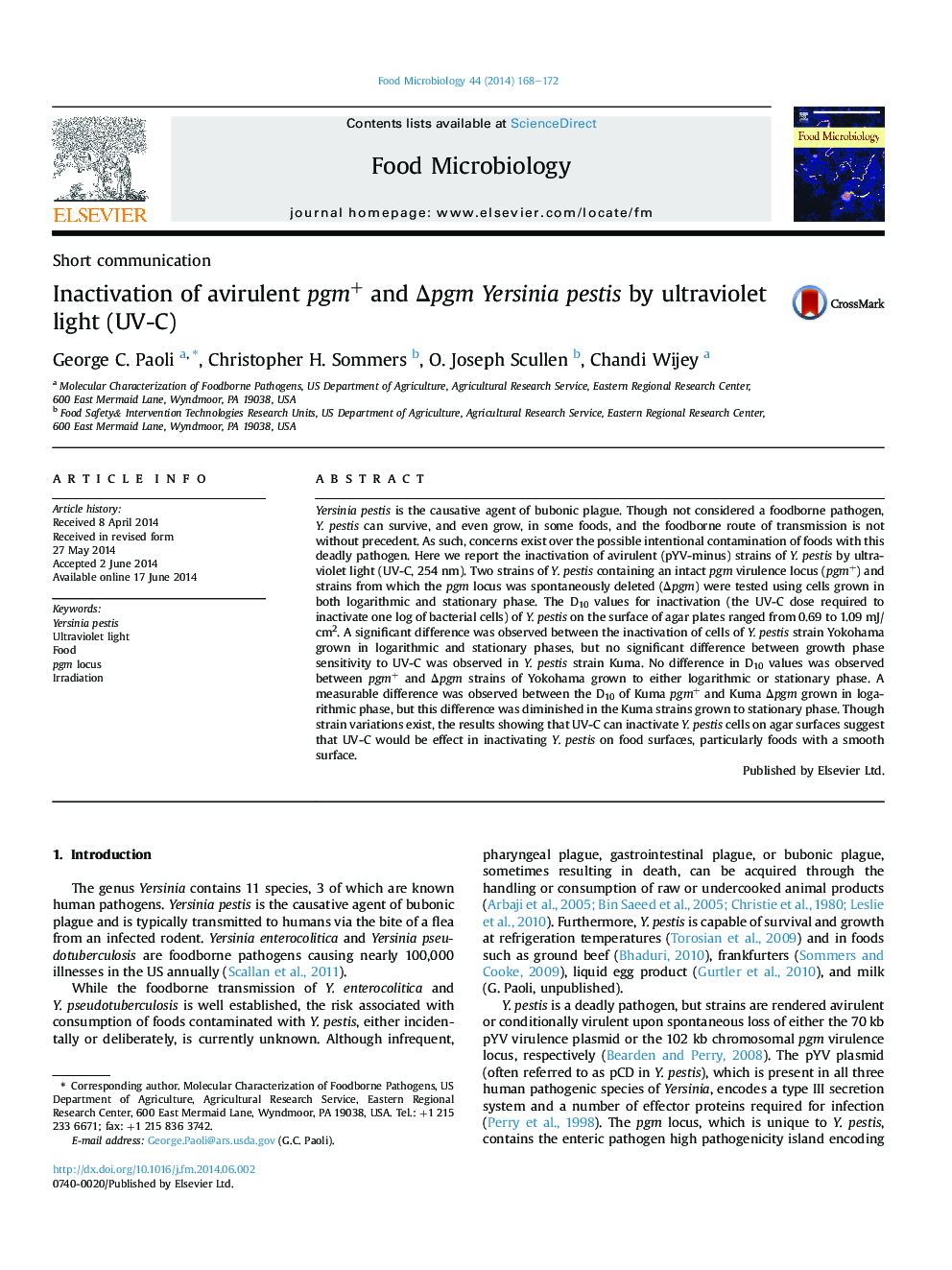| Article ID | Journal | Published Year | Pages | File Type |
|---|---|---|---|---|
| 6288674 | Food Microbiology | 2014 | 5 Pages |
Abstract
Yersinia pestis is the causative agent of bubonic plague. Though not considered a foodborne pathogen, Y. pestis can survive, and even grow, in some foods, and the foodborne route of transmission is not without precedent. As such, concerns exist over the possible intentional contamination of foods with this deadly pathogen. Here we report the inactivation of avirulent (pYV-minus) strains of Y. pestis by ultraviolet light (UV-C, 254 nm). Two strains of Y. pestis containing an intact pgm virulence locus (pgm+) and strains from which the pgm locus was spontaneously deleted (Îpgm) were tested using cells grown in both logarithmic and stationary phase. The D10 values for inactivation (the UV-C dose required to inactivate one log of bacterial cells) of Y. pestis on the surface of agar plates ranged from 0.69 to 1.09 mJ/cm2. A significant difference was observed between the inactivation of cells of Y. pestis strain Yokohama grown in logarithmic and stationary phases, but no significant difference between growth phase sensitivity to UV-C was observed in Y. pestis strain Kuma. No difference in D10 values was observed between pgm+ and Îpgm strains of Yokohama grown to either logarithmic or stationary phase. A measurable difference was observed between the D10 of Kuma pgm+ and Kuma Îpgm grown in logarithmic phase, but this difference was diminished in the Kuma strains grown to stationary phase. Though strain variations exist, the results showing that UV-C can inactivate Y. pestis cells on agar surfaces suggest that UV-C would be effect in inactivating Y. pestis on food surfaces, particularly foods with a smooth surface.
Related Topics
Life Sciences
Agricultural and Biological Sciences
Food Science
Authors
George C. Paoli, Christopher H. Sommers, O. Joseph Scullen, Chandi Wijey,
